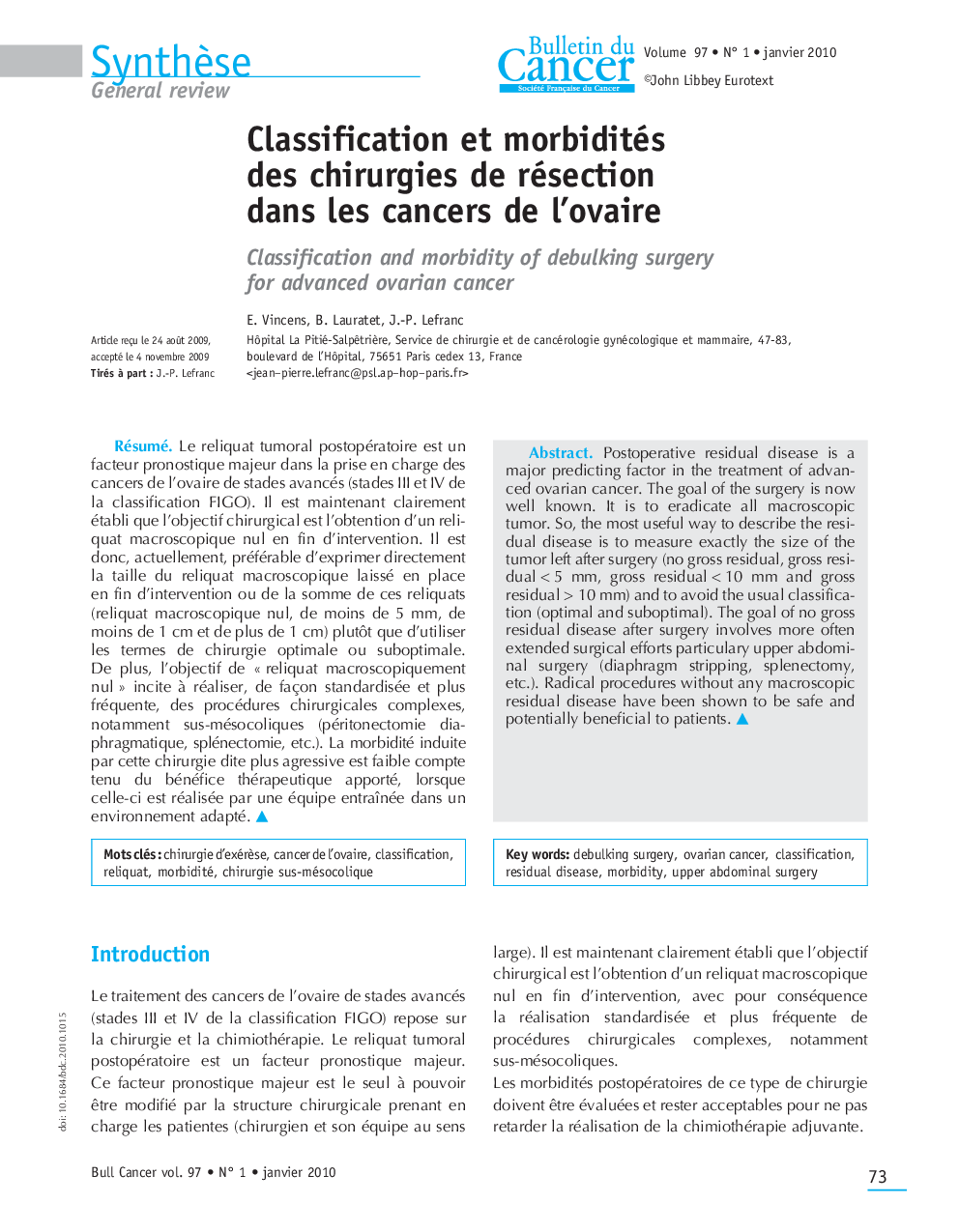| کد مقاله | کد نشریه | سال انتشار | مقاله انگلیسی | نسخه تمام متن |
|---|---|---|---|---|
| 3979423 | 1257333 | 2010 | 5 صفحه PDF | دانلود رایگان |
عنوان انگلیسی مقاله ISI
Classification et morbidités des chirurgies de résection dans les cancers de l'ovaire
دانلود مقاله + سفارش ترجمه
دانلود مقاله ISI انگلیسی
رایگان برای ایرانیان
کلمات کلیدی
موضوعات مرتبط
علوم پزشکی و سلامت
پزشکی و دندانپزشکی
تومور شناسی
پیش نمایش صفحه اول مقاله

چکیده انگلیسی
Postoperative residual disease is a major predicting factor in the treatment of advanced ovarian cancer. The goal of the surgery is now well known. It is to eradicate all macroscopic tumor. So, the most useful way to describe the residual disease is to measure exactly the size of the tumor left after surgery (no gross residual, gross residual <Â 5Â mm, gross residual <Â 10Â mm and gross residual >Â 10Â mm) and to avoid the usual classification (optimal and suboptimal). The goal of no gross residual disease after surgery involves more often extended surgical efforts particulary upper abdominal surgery (diaphragm stripping, splenectomy, etc.). Radical procedures without any macroscopic residual disease have been shown to be safe and potentially beneficial to patients.
ناشر
Database: Elsevier - ScienceDirect (ساینس دایرکت)
Journal: Bulletin du Cancer - Volume 97, Issue 1, January 2010, Pages 73-77
Journal: Bulletin du Cancer - Volume 97, Issue 1, January 2010, Pages 73-77
نویسندگان
E. Vincens, B. Lauratet, J.-P. Lefranc,